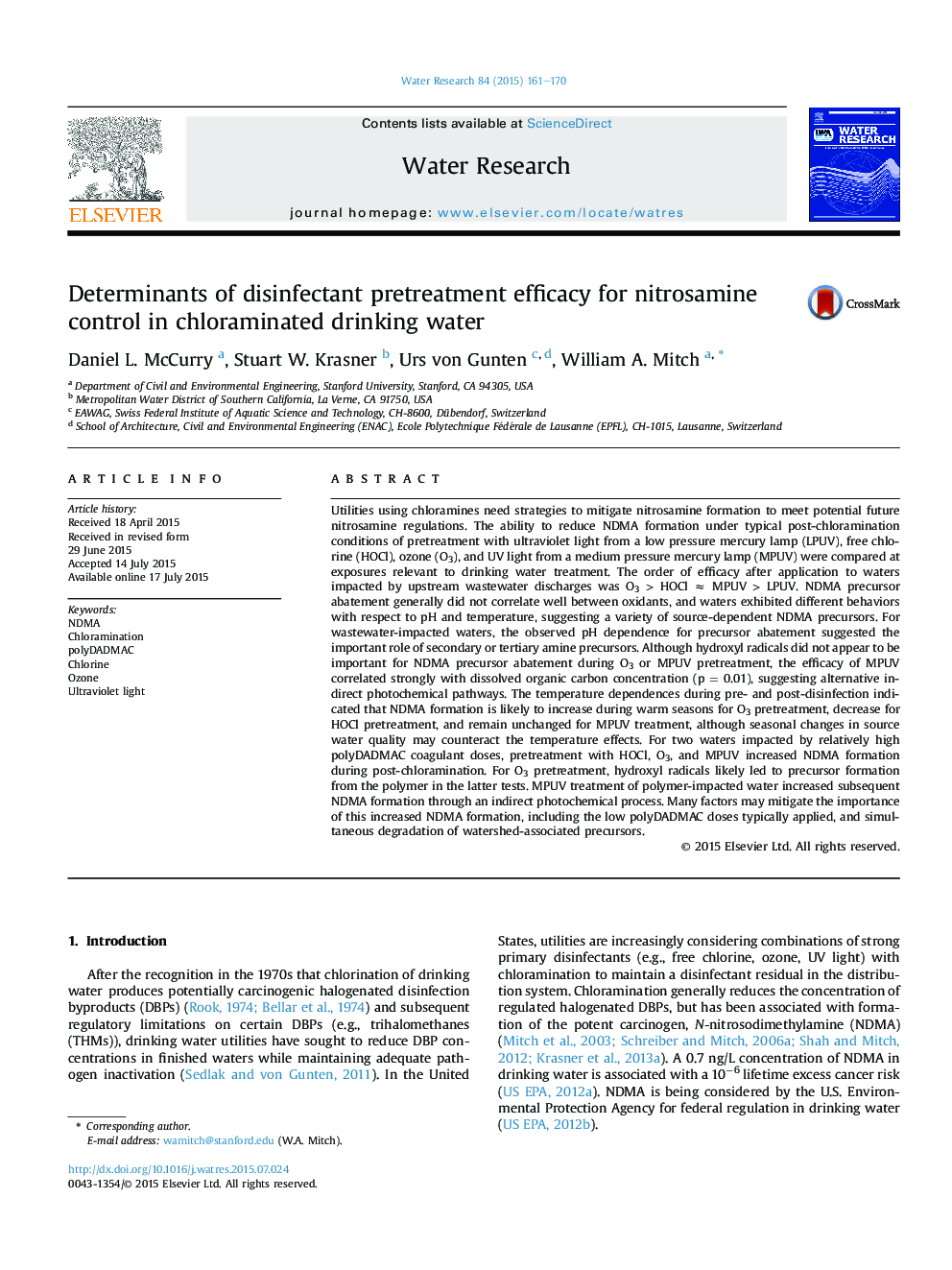| کد مقاله | کد نشریه | سال انتشار | مقاله انگلیسی | نسخه تمام متن |
|---|---|---|---|---|
| 4481084 | 1623084 | 2015 | 10 صفحه PDF | دانلود رایگان |
• Ozone was the most effective pretreatment to deactivate NDMA precursors.
• Medium pressure UV was as effective as chlorine and more effective than low pressure UV.
• Direct ozone reactions were more important than hydroxyl radical reactions.
• Precursor deactivation by medium pressure UV involved indirect photolysis.
• Ozone, medium pressure UV and (less so), chlorine, increased NDMA formation from polyDADMAC.
Utilities using chloramines need strategies to mitigate nitrosamine formation to meet potential future nitrosamine regulations. The ability to reduce NDMA formation under typical post-chloramination conditions of pretreatment with ultraviolet light from a low pressure mercury lamp (LPUV), free chlorine (HOCl), ozone (O3), and UV light from a medium pressure mercury lamp (MPUV) were compared at exposures relevant to drinking water treatment. The order of efficacy after application to waters impacted by upstream wastewater discharges was O3 > HOCl ≈ MPUV > LPUV. NDMA precursor abatement generally did not correlate well between oxidants, and waters exhibited different behaviors with respect to pH and temperature, suggesting a variety of source-dependent NDMA precursors. For wastewater-impacted waters, the observed pH dependence for precursor abatement suggested the important role of secondary or tertiary amine precursors. Although hydroxyl radicals did not appear to be important for NDMA precursor abatement during O3 or MPUV pretreatment, the efficacy of MPUV correlated strongly with dissolved organic carbon concentration (p = 0.01), suggesting alternative indirect photochemical pathways. The temperature dependences during pre- and post-disinfection indicated that NDMA formation is likely to increase during warm seasons for O3 pretreatment, decrease for HOCl pretreatment, and remain unchanged for MPUV treatment, although seasonal changes in source water quality may counteract the temperature effects. For two waters impacted by relatively high polyDADMAC coagulant doses, pretreatment with HOCl, O3, and MPUV increased NDMA formation during post-chloramination. For O3 pretreatment, hydroxyl radicals likely led to precursor formation from the polymer in the latter tests. MPUV treatment of polymer-impacted water increased subsequent NDMA formation through an indirect photochemical process. Many factors may mitigate the importance of this increased NDMA formation, including the low polyDADMAC doses typically applied, and simultaneous degradation of watershed-associated precursors.
Figure optionsDownload high-quality image (238 K)Download as PowerPoint slide
Journal: Water Research - Volume 84, 1 November 2015, Pages 161–170
